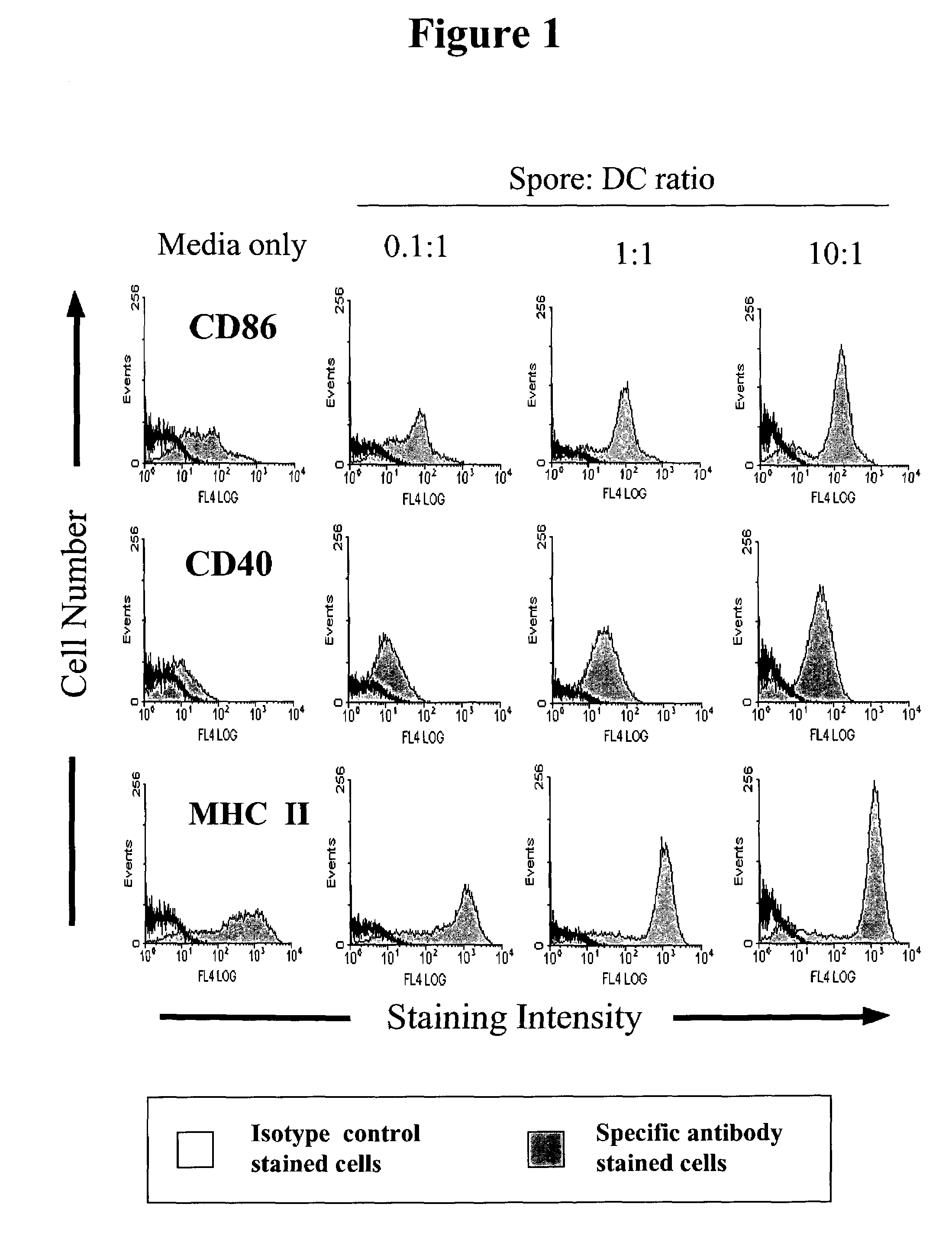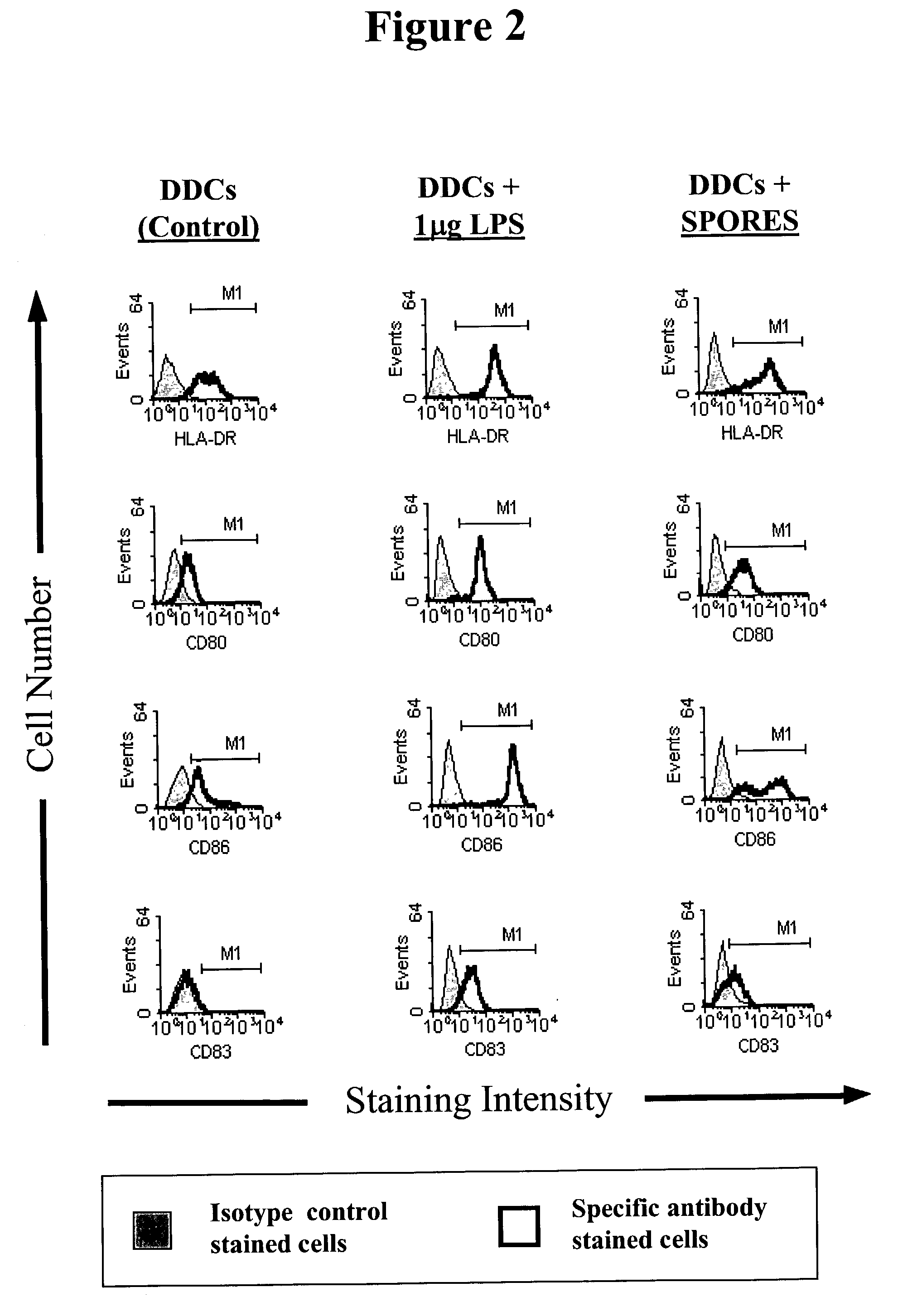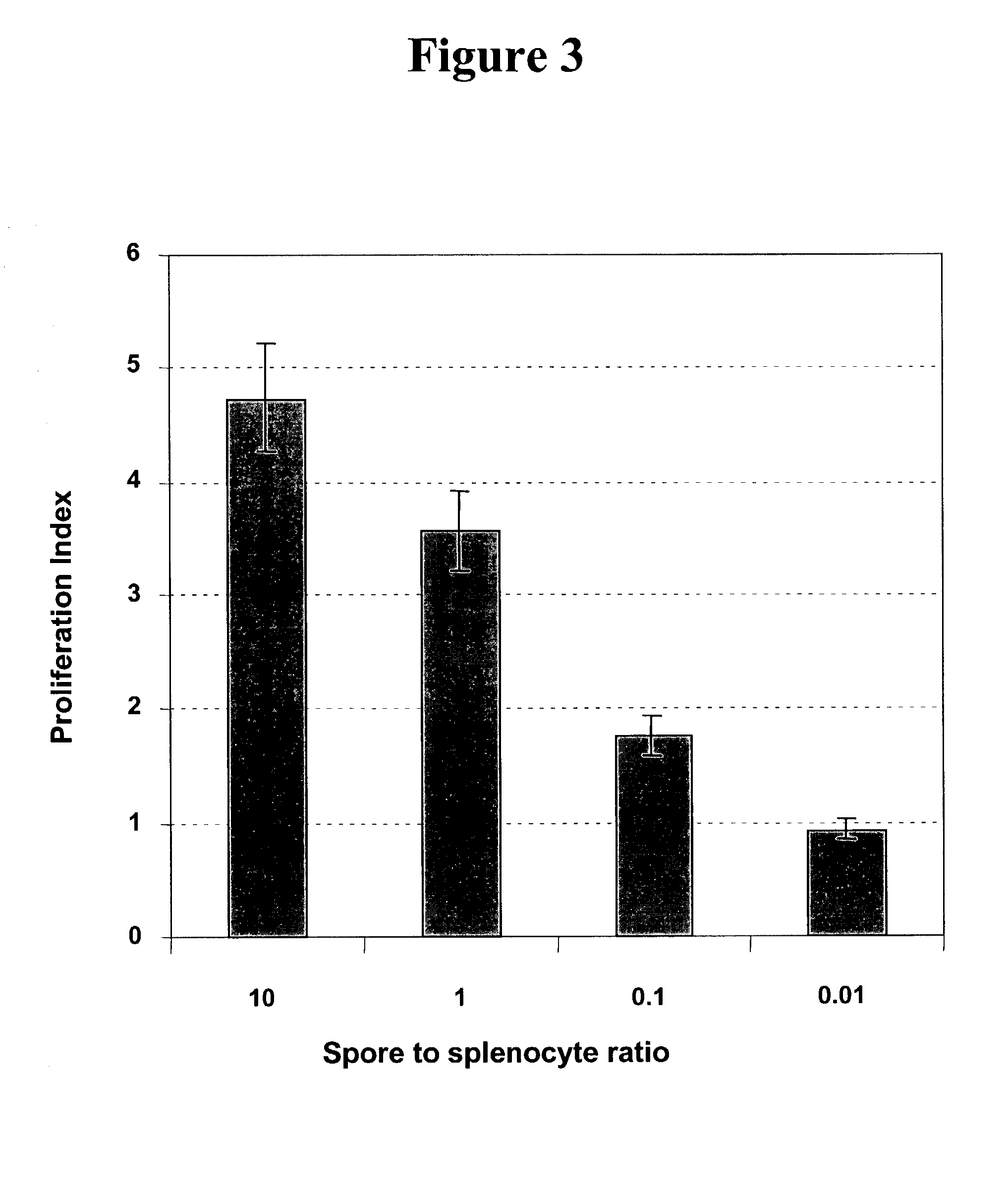Composition and corresponding method of using spores of Bacillus subtilis to stimulate and/or enhance immune response in mammals
a technology of bacillus subtilis and spores, which is applied in the field of materials having adjuvants, immunomodulatory, immunopotentiatory or innate stimulatory effects, can solve the problems of not being suitable for mucosal adjuvants (oral), not being particularly effective at inducing cellular immunity, and not being able to induce allergic immunoglobulin-e (ige) responses. to achieve the effect of safe augmenting the immunogenicity of vaccines
- Summary
- Abstract
- Description
- Claims
- Application Information
AI Technical Summary
Benefits of technology
Problems solved by technology
Method used
Image
Examples
example 1
Spores from Bacillus subtilis Activate Antigen Presenting Cells (APC)
[0093]Bone marrow-derived dendritic cells (BMDC) were isolated from Balb / c mice and cultured by standard procedures modified from Svensson et al 1997. Isolated bone-marrow derived (erythrocyte depleted) cells at 5×106 were cultured in RPMI medium supplemented with 10% foetal bovine serum (FCS) and 20 ng / ml recombinant Granulocyte-macrophage colony-stimulating factor (GM-CSF) (from R&D systems) on untreated plastic dishes. Non-adherent cells were removed on day 5 and CD11c+ dendritic cells (DC) were magnetically purified by positive selection on Magnetic activated cell separation (MACS) columns (Miltenyi Biotec GmbH) in accordance with manufacturer's instructions. Purified dendritic cells (1×106 cells / ml) were incubated in 24-well tissue culture plates with either 105, 106, or 107 autoclaved (replication defective) B. subtilis spores or with lipopolysaccharide (LPS from E. coli) at 2 μg / ml or with tissue culture med...
example 2
B. subtilis Spores Activate Human Monocyte Derived Dermal Dendritic Cells and Langerhans Cells.
[0096]Generation of Human Monocyte Derived Dermal Dendritic cells:
[0097]Peripheral blood mononuclear cells (PBMCs) from healthy uninfected volunteers were initially separated from heparinised whole blood using Histopaque 1077 (Ficoll). Monocytes were harvested from the interface of a 50% Percoll gradient after centrifugation of PBMCs at 300 g for 30 minutes. The cells were washed in HEPES buffered RPMI-1640 medium supplemented with 2% foetal calf serum (FCS), 1% Penicillin, 1% Streptomycin and 1% L-glutamine (defined as RPMI complete medium). After 2 hours incubation in an atmosphere of 5% CO2 at 37° C. with RPMI complete medium supplemented with 10% FCS in gelatine-coated flasks, the adherent cells were gently washed and resuspended in 1000 IU / ml Interleukin-4 (IL-4) and Granulocyte Macrophage-Colony Stimulating factor (GM-CSF) at 150 IU / ml and incubated for 7-10 days. At day 2, IL-4 and ...
example 3
Spores from B. subtilis Stimulate Antigen Presenting Cells to Secrete Cytokines.
[0102]Activated dendritic cells often demonstrate an enhanced capacity to secrete inflammatory cytokines, which provide environmental signals to polarise responding naïve T cells and influence the type of immune response elicited to an antigen. We therefore examined, by intra-cellular cytokine staining, whether treatment of BMDC with spores led to cytokine production. BMDC cultured in the presence or absence of 5 spores per cell for 12 or 36 hours, and were subsequently incubated for a further 6 hours with brefeldin A (10 μg / ml). The cells were then fixed in 1% formyl saline for 15 minutes at room temperature, washed with flow cytometry buffer and then permeabilised (15 minutes at room temperature) with phosphate buffered saline containing EDTA, 2% foetal calf serum and 0.2% saponin. The cells were then washed 3× with flow cytometry buffer, blocked with anti-mouse CD32 / CD16 (Fc 11 / 1111 receptor block, Ph...
PUM
| Property | Measurement | Unit |
|---|---|---|
| Fraction | aaaaa | aaaaa |
| Immunogenicity | aaaaa | aaaaa |
| Antigenicity | aaaaa | aaaaa |
Abstract
Description
Claims
Application Information
 Login to View More
Login to View More - R&D
- Intellectual Property
- Life Sciences
- Materials
- Tech Scout
- Unparalleled Data Quality
- Higher Quality Content
- 60% Fewer Hallucinations
Browse by: Latest US Patents, China's latest patents, Technical Efficacy Thesaurus, Application Domain, Technology Topic, Popular Technical Reports.
© 2025 PatSnap. All rights reserved.Legal|Privacy policy|Modern Slavery Act Transparency Statement|Sitemap|About US| Contact US: help@patsnap.com



